Match the generic name listed under Column I with the common name given under Column II. Choose the answer which givesthe correct combination of the alphabets of the two Columns.
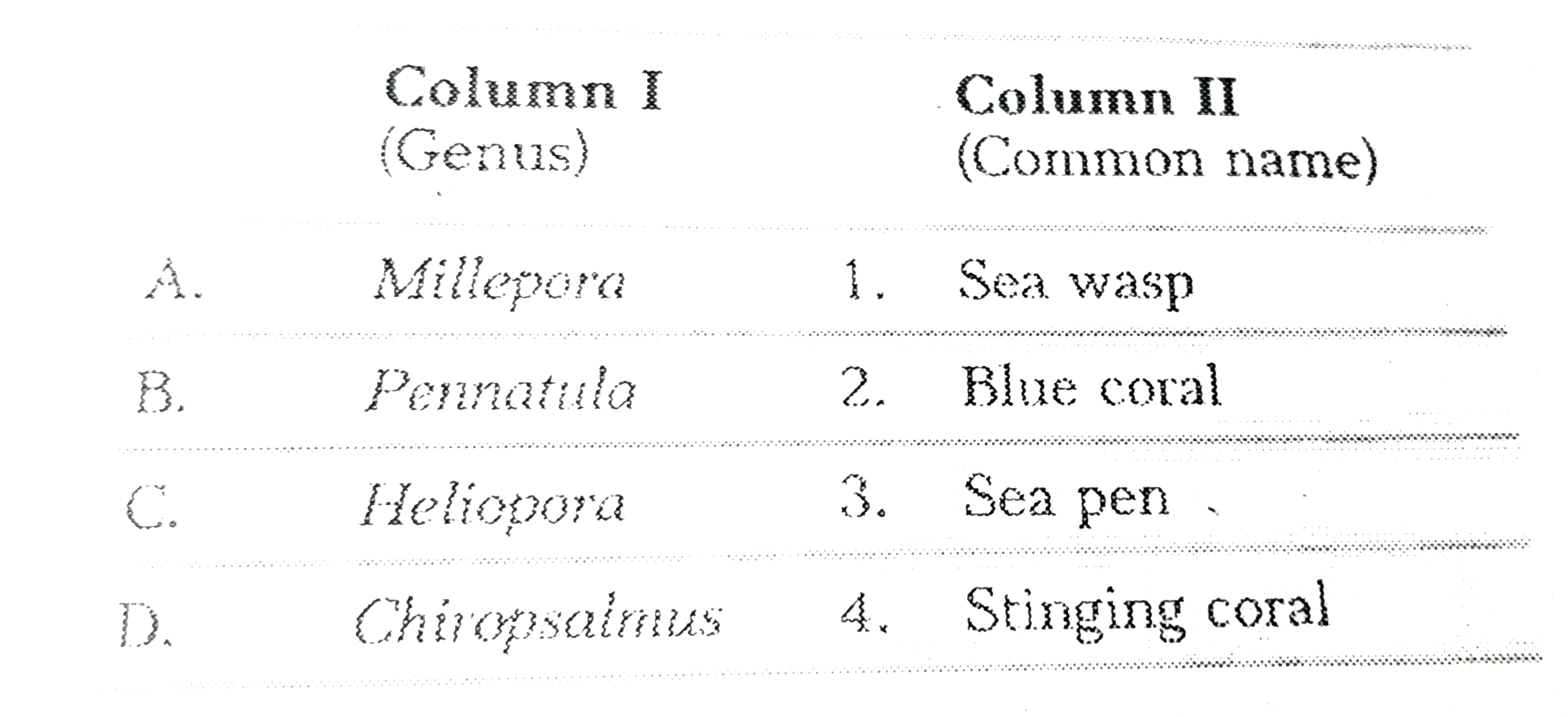
ABCD4231
ABCD2341
ABCD4321
ABCD3241
The correct Answer is:C
Step by step video & image solution for Match the generic name listed under Column I with the common name given under Column II. Choose the answer which givesthe correct combination of the alphabets of the two Columns. by Biology experts to help you in doubts & scoring excellent marks in Class 12 exams.
Updated on:21/07/2023Topper's Solved these Questions
- ANIMALIA -I (LOWER INVERTEBRATES)Book:ARIHANT NEETChapter:ANIMALIA -I (LOWER INVERTEBRATES)Exercise:CHAPTER EXERCISES (Taking it together) Medical entrances special format questions (Assertion and reason)
Explore 24 Videos
- ANIMALIA -I (LOWER INVERTEBRATES)Book:ARIHANT NEETChapter:ANIMALIA -I (LOWER INVERTEBRATES)Exercise:CHAPTER EXERCISES (Taking it together) medical entrances gallery (Collection of Questions Asked in NEET & in various Entrance Exams))
Explore 68 Videos
- ANIMALIA -I (LOWER INVERTEBRATES)Book:ARIHANT NEETChapter:ANIMALIA -I (LOWER INVERTEBRATES)Exercise:CHAPTER EXERCISES (Taking it together) Medical entrances special format questions (Statement based questions)
Explore 29 Videos
- ANIMAL TISSUES Book:ARIHANT NEETChapter:ANIMAL TISSUES Exercise:CHANPTER EXERCISES (MEDICAL ENTRANCES GALLERY)(COLLECTION OF QUESTIONS ASKED IN NEET & VARIOUS MEDICAL ENTRANCE EXAMS)
Explore 63 Videos
- ANIMALIA-II (HIGHER INVERTEBRATES) Book:ARIHANT NEETChapter:ANIMALIA-II (HIGHER INVERTEBRATES) Exercise:Chapter Exercises C Medical entrances gallery (Collection of questions Asked in NEET & Various Medical Entrance Exams )
Explore 1 Video
Similar Questions
Match the structure listed under column -I with the functional names given under column - II , choose the answer which gives the correct combination of the alphabets of the two columns .

View SolutionMatch the names of disease listed under column I when meaning given under column II, choose the answer which gives the correct combination of the alphabets of the columns

View Solution
Knowledge Check
Match the terms listed under column I with the description given under column II, choose the answer which give the correct combination of the alphabets of the two columns :
(GRBOBJBIOIINDC56E01171_Q01)AA=s,B=q,C=r,D=pBA=r,B=s,C=p,D=qCA=s,B=r,C=q,D=pDA=r,B=q,C=s,D=pMatch the names of diseases listed under Column I with the meaning given undre Column II. Choose the answer which gives the correct combination of alphabets of the two column:
Column-I(Names of disease)Column-II(Meaning)A Jaundicep Allergic inflammation of noseB Stenosisq Loss of moter functionsC Rhinitisr Heart valve defectD Paralysiss Increase in bile pigments in the bloodt Septal defect in heartAA=q, B=t, C=r, D=pBA=s, B=p, C=q, D=rCA=s, B=r, C=p, D=qDA=s, B=t, C=p, D=qMatch the column I with column II. Choose the answer which gives the correct combination of the alphabets of the two columns :
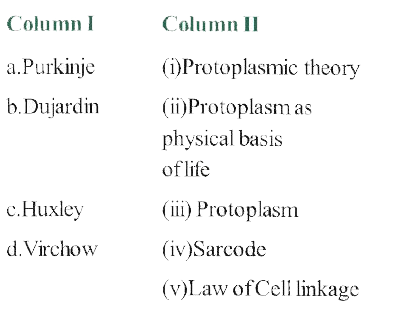 Aa(v) , b(iii), c(ii), d(i)Ba(iii), b(iv), c(ii),d(v)Ca(iii), b(ii), c(i), d(v)Da(v),b(iv), c(iii), d(ii)
Aa(v) , b(iii), c(ii), d(i)Ba(iii), b(iv), c(ii),d(v)Ca(iii), b(ii), c(i), d(v)Da(v),b(iv), c(iii), d(ii)
Match the Era listed under column I with the events given under column II, choose the answer which gives the correct combination of the alphabets of the two columns :
(GRBOBJBIOIINDC56E01242_Q01)
View SolutionMatch the excretory organs listed under column I with the animals given under column II. Choose the answer which gives the correct combination of alphabets of two columns.
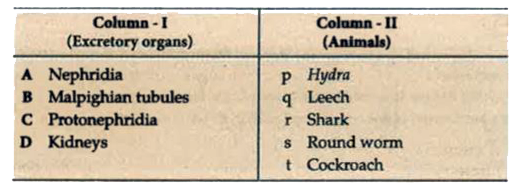
View SolutionMatch the hormones listed under column I with their functions listed under column II. Choose the answer which gives the CORRECT combination of the alphabets of the two columns.
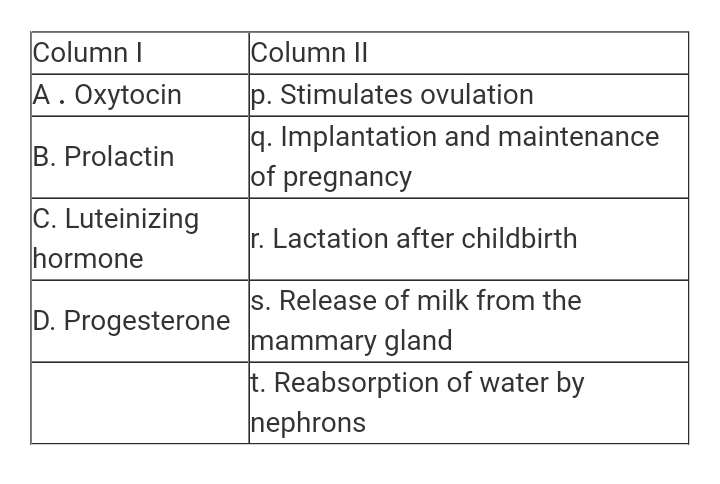
View SolutionMatch the excretory organs listed under column I with the animals given under column. II Choose answer which gives the correct combination of alphabets of the two
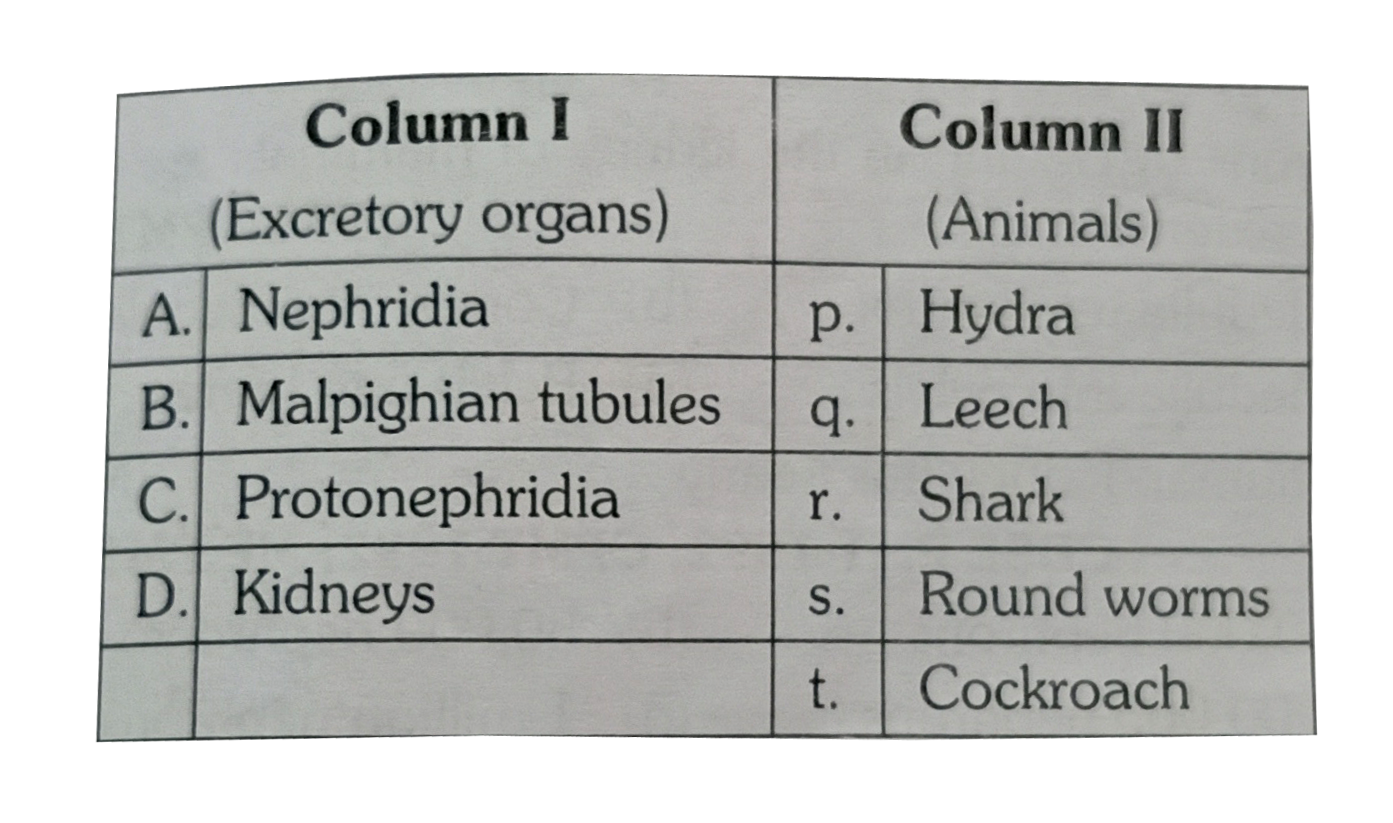
View SolutionMatch the blood vessels of human heart listed under column-I with the functions given under Column-II, Choose the answer which gives the correct combination of the alphabets of the two columns

View Solution

